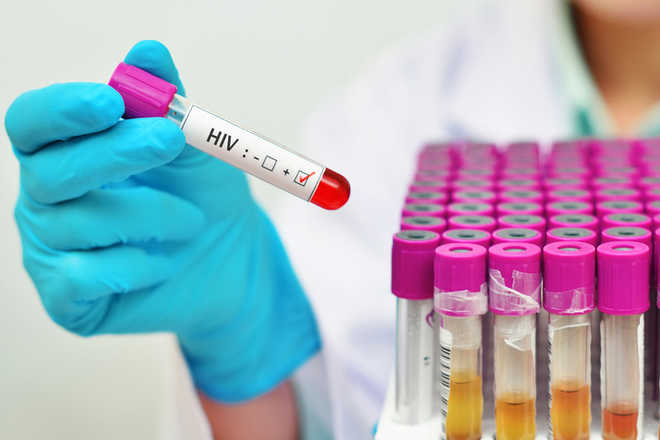
Thinkstock photo for representation
Los Angeles, January 6
Scientists have cracked the elusive atomic structure of a key machinery that allows HIV to integrate into human host DNA and replicate in the body, an advance that may lead to the development of new drugs for the deadly virus.
“We’re particularly excited about the ability to understand and combat mechanisms of viral resistance,” said Dmitry Lyumkis, from the Salk Institute for Biological Studies in US.
“HIV is a clever virus and has learned to evade even some of the best drugs on the market. Understanding the mechanisms of viral escape and developing more broadly applicable drugs will be a major direction in the future,” Lyumkis said.
Currently, a class of drugs called integrase strand transfer inhibitors (INSTIs) targets the machinery, known as the “intasome,” and are already approved to treat HIV in the US and Europe.
Despite being some of the best drugs available, scientists have only gained a limited understanding of the precise mechanism of action of INSTIs, and how the virus mounts resistance, by the inference of structures of a similar retrovirus (called the prototype foamy virus or PFV).
That is because the HIV intasome itself has been notoriously difficult to study at the atomic level.
“Now we have the very first native blueprint in the context of HIV for studying the mechanisms of INSTIs,” said Lyumkis.
He and collaborators are already using the discovery to try to improve the ability of INSTIs to block the virus.
As a retrovirus, HIV inserts a DNA copy of its RNA genome into the host’s DNA using the intasome, which cuts and pastes viral DNA using enzymes called integrases.
In 1994, scientists determined the structure of a small part of the integrase enzyme.
Since then, biologists have solved several other pieces of the HIV integrase, as well as the intasomes from other retroviruses.
However, the entire structure of the HIV intasome remained difficult to solve using conventional techniques.
In the new study, Lyumkis and colleagues used a cutting-edge imaging technique called single-particle cryo-electron microscopy (cryo-EM), which has increasingly allowed scientists to image large, complex and dynamic molecules.
The team attached a specific protein to improve the intasome’s ability to dissolve in liquid and bathed the intasome in a syrup-like liquid called glycerol, with loads of salt added to prevent it from clumping.
These are extreme conditions for a cryo-EM sample, but they were necessary in the case of the HIV intasome. Then, building upon novel technical advances in the field, the scientists cranked up the cryo-EM machine to spray even more electrons at their sample than usual. The research appears in the journal Science. — PTI



























